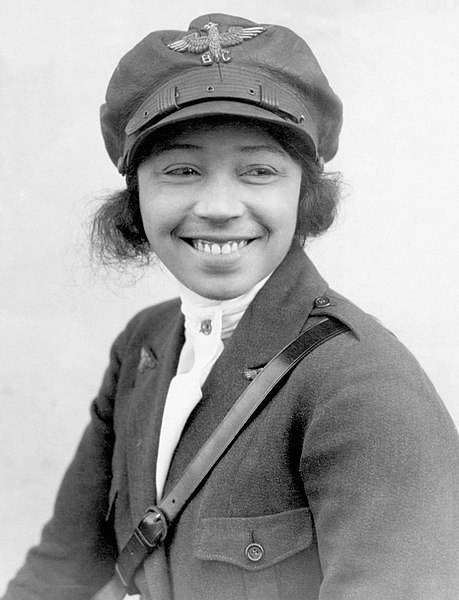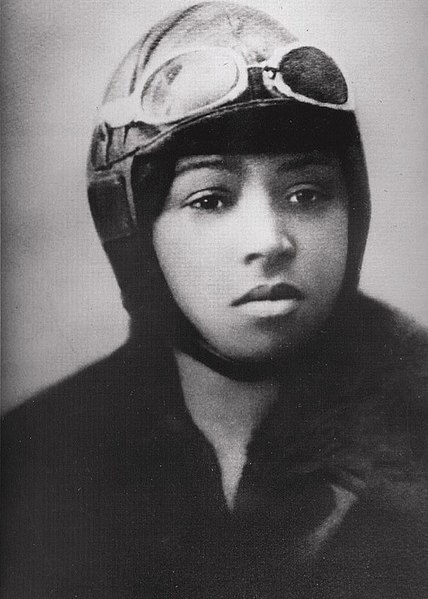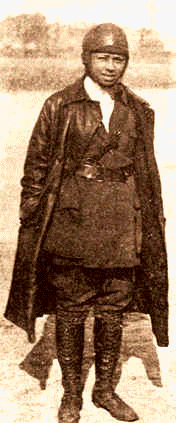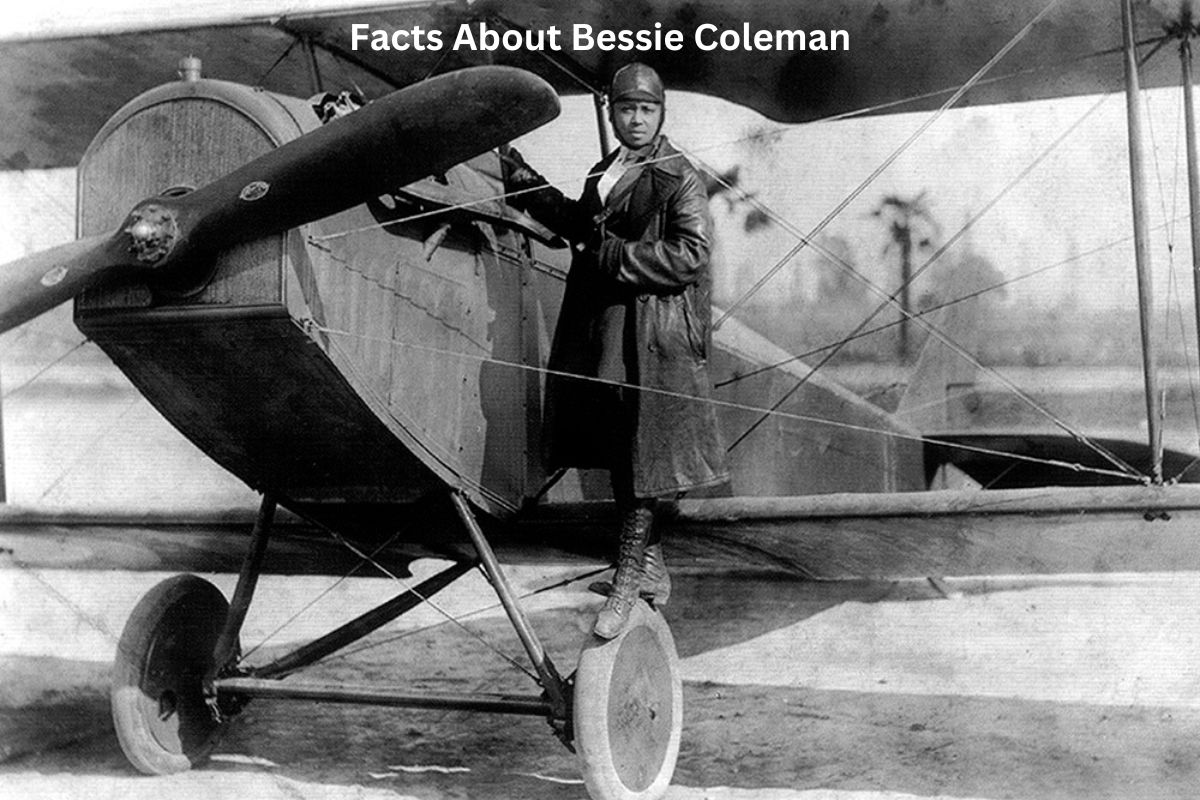Bessie Coleman, born in 1892 in Atlanta, Texas, was a pioneering African American aviator who overcame formidable racial and gender barriers to achieve remarkable milestones in the early history of aviation.
Her journey from a challenging childhood in a segregated society to becoming the first African American and Native American(self identified) woman to hold an international pilot’s license is a testament to her determination and resilience.
In this article, we will explore the life and legacy of Bessie Coleman, including her inspiring achievements, her impact on aviation history, and her enduring influence on future generations.
Bessie Coleman Facts
1. Born on January 26, 1892, in Atlanta, Texas
Bessie Coleman was born on January 26, 1892, in Atlanta, Texas, which was a segregated and racially discriminatory environment during her childhood.
Also Read: Bessie Coleman Timeline
She was born to George and Susan Coleman, who were sharecroppers struggling to make ends meet in a predominantly African American community. Bessie grew up in a large family, with ten siblings, which made life even more challenging for her family.

2. Faced limited educational opportunities due to segregation
Growing up in the rural South during the late 19th and early 20th centuries, Bessie faced significant challenges in obtaining a quality education.
Segregation laws meant that African American students attended separate, often underfunded, and poorly equipped schools.
These schools were sometimes miles away from her home, requiring young Bessie to walk long distances to attend classes. Despite these obstacles, she was determined to learn and was an eager student.
3. Dreamed of becoming a pilot from a young age
Bessie Coleman’s fascination with aviation began when she heard stories about World War I pilots and their heroic adventures. She was inspired by their bravery and daring exploits in the skies.
Also Read: Accomplishments of Bessie Coleman
From a young age, she dreamed of becoming a pilot herself, even though it seemed like an impossible dream given the racial and gender discrimination of the time. Her family and friends encouraged her to pursue her passion, and she became determined to make her dream a reality.
4. Moved to France to attend flight school in 1920
In 1920, Bessie Coleman made a significant decision to move to France to pursue her dream of becoming a pilot. She faced insurmountable racial and gender discrimination in the United States, which made it nearly impossible for her to find a flight school willing to train an African American woman.
France, however, was more open to her ambitions. She enrolled in the Caudron Brothers’ School of Aviation in Le Crotoy, a flight school that welcomed her as a student.
This decision marked a turning point in her life, as it was in France that she would receive the training and opportunities she needed to achieve her goals.

5. Became the first African American and Native American woman with an international pilot’s license in 1921
Bessie Coleman achieved a historic milestone on June 15, 1921, when she earned her international pilot’s license from the Fédération Aéronautique Internationale.
This achievement made her not only the first African American woman to hold a pilot’s license but also the first Native American(self identified) woman. Her license was a testament to her determination and her ability to overcome societal barriers.
This accomplishment was celebrated not only in the United States but also in Europe, where she was regarded as a trailblazer in aviation.
6. Nicknamed “Queen Bess” by the press and public
Bessie Coleman’s remarkable achievements in aviation earned her the nickname “Queen Bess” from the press and the public. This title symbolized her regal status as a pioneer and a symbol of hope and inspiration, particularly for African Americans and women.
Bessie’s courageous pursuit of her dreams and her success as a pilot captured the imagination of people worldwide. Her determination, skill, and grace in the skies made her a beloved figure in the aviation community and beyond.
7. Worked as a barnstorming pilot, performing in air shows
After earning her pilot’s license in France, Bessie Coleman returned to the United States and embarked on a career as a barnstormer.
Barnstorming was a popular form of entertainment in the 1920s, where pilots performed daring stunts and aerial maneuvers to captivate audiences.
Bessie’s aerial performances were a sensation, and she became known for her fearless and thrilling displays in the skies. Her shows not only showcased her aviation skills but also challenged prevailing racial and gender stereotypes.

8. Tragically died in a plane crash on April 30, 1926
On April 30, 1926, tragedy struck when Bessie Coleman was preparing for an airshow in Jacksonville, Florida. During a test flight in an old Curtiss JN-4 “Jenny” biplane, the plane unexpectedly went into a nosedive, throwing Bessie from the aircraft.
She tragically fell to her death, marking the end of her promising career and her life. The accident was attributed to a lack of proper maintenance and a worn-out control lever in the plane.
9. Her legacy inspires aspiring aviators, especially women and people of color
Bessie Coleman’s legacy continues to inspire people around the world. Her determination to overcome racial and gender barriers in aviation and her passion for flying have left an indelible mark on the history of aviation.
She became a symbol of hope and opportunity for African Americans and women aspiring to enter the field of aviation. Her legacy serves as a reminder of the importance of breaking down barriers and pursuing dreams despite adversity.
10. Numerous honors and organizations exist to commemorate her achievements
Bessie Coleman has been posthumously honored in various ways to commemorate her achievements and contributions. Several organizations, including the Bessie Coleman Aero Club and the Bessie Coleman Aviators Club, were established to promote aviation and diversity in the field.
Additionally, her life story has been celebrated through stamps, books, documentaries, and other forms of media. These efforts aim to ensure that her legacy endures and that future generations continue to be inspired by her groundbreaking accomplishments.
